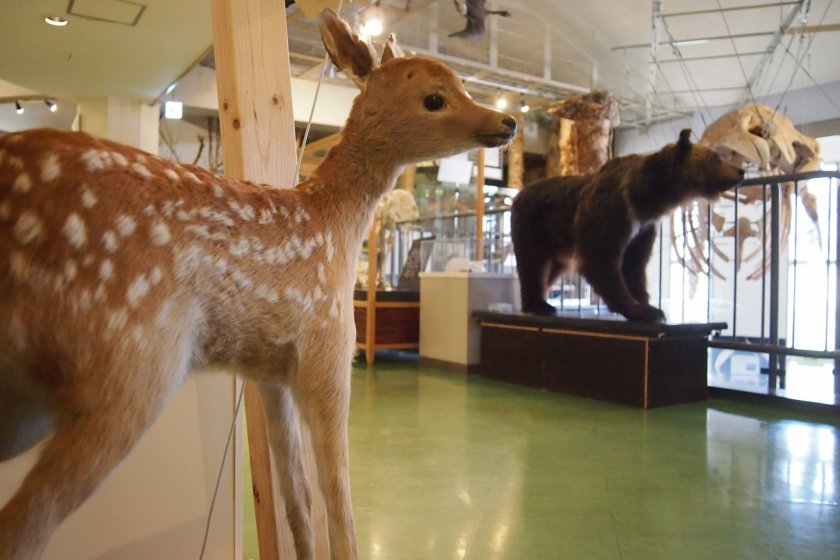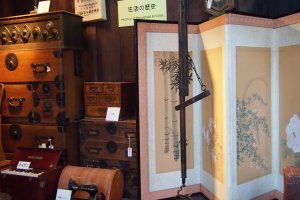Shiretoko Museum is one of the few things I could sight-see at as a visitor in November, since the nature parks are all closed. As the Shiretoko Museum, is just a 20 minute walk from my hotel, Hotel Grantia Shiretoko-Shari Ekimae, I took a walk there and enjoyed a great time looking at the artifacts in the museum especially of the flora and fauna in Shiretoko.
The first floor of the museum features the history and folklore of Shiretoko. I was very impressed that the museum uses ipads to make the museum experience interactive and interesting especially for children. If one were to understand Japanese, this would be undoubtedly a very educational journey through time.
All of the museum's exhibits are largely in Japanese only.
As for me, I enjoyed the second floor more, which was concerning the nature and animals in Shiretoko. There were so many artifacts that it was pretty much like a zoo - a non-living zoo.
The second floor housed anything from butterflies, trees, birds, bears, deer, various marine life. I wondered briefly if these are real stuffed animals but still haven't got an answer. Most of the animal names are in Japanese Katana, so as long as you can read katana, the second floor will prove to be quite interesting.
To appeal to the children, there are many hands-on booths as well, such as boxes with just a hold for you to extend your hand into. Some of these boxes have an animal bone and others have a patch fur from an animal (hope they aren't real!).
Even though it is designed to be children-friendly, it doesn't hide the reality of the roughness of Shiretoko's nature. Part of its educational function is to show the rugged nature of Shiretoko-Shari, and the museum does not sugar coat that fact. Models of bears feasting on dears and eagles devouring their prey are displayed.
The museum connects to the Memorial Hall of Shari's sister town relationships. The museum price of 300 yen entitles you to go into this as well. Shiretoko is a sister city of Taketomi Town and Hirosaki City. The exhibits displayed are colourful and closer to the modern period that we are living in. I enjoyed looking at the floats used for summer festivals very much.
There is also an outdoor area, where there are facilities such as a protection facility for injured animals, an ainu hut, and an observation pond. The day that I visited there were two white-tailed sea eagles and two stellar's sea eagles in the cage. There is something disconcerting about putting such large, wild birds into cages however, so I didn't stay there for long.
The museum holds lectures and activities are frequently for its visitors as well, so do check for them when you visit.

































